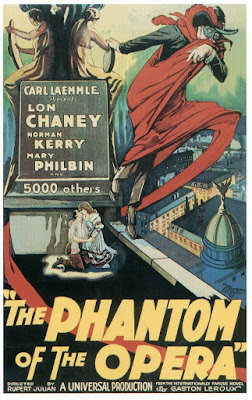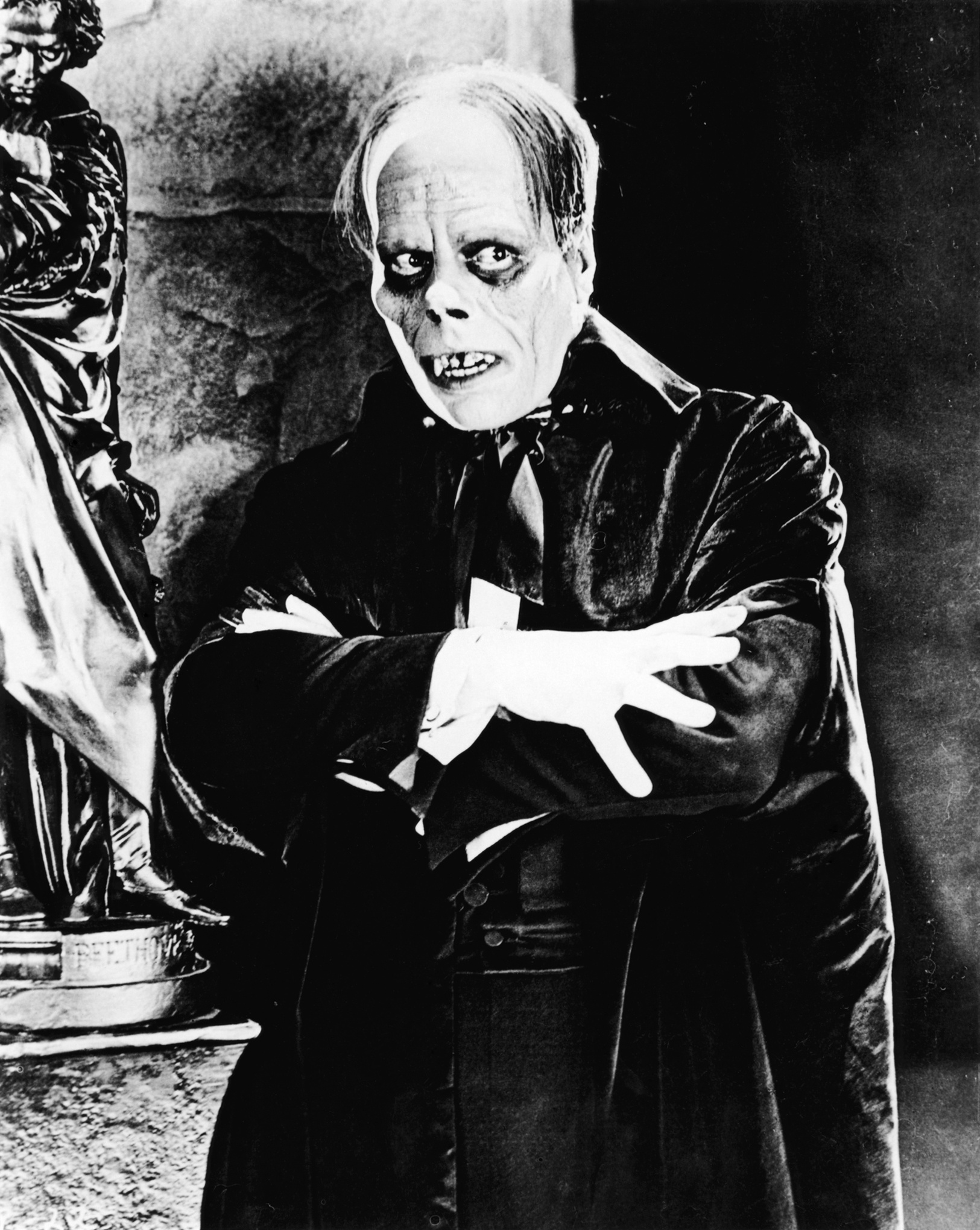Phantom of the Opera, The (1925)
 Universal Pictures
Universal PicturesDirector: Rupert Julian
Starring: Lon Chaney, Norman Kerry, Mary Philbin
Honors:
National Film Registry
Lon Chaney, "The Man of a Thousand Faces," returns to the silver screen in role that would define his career as the most talented make-up artist of his era in film. The Phantom of the Opera was a film that helped propell the young newly dubbed Universal Film Company into the highly successful film studio that continues to produce major motion pictures to this day.
The Phantom of the Opera is the famous adaptation of the famous novel by Gaston Leroux that is most known for today as a highly popular stage play beloved for its time on Broadway. The film is the story of the Paris Opera House and the mysteries that surrounds it productions. The shadowy masked Phantom (Chaney) uses threats to make the lovely Christine (Mary Philbin), whom he is infatuated with, into a star. When his orders to have Christine star in a production is not obeyed the Phantom causes the grand crystal chandelier to fall on the viewing audience. After the Phantom entices Christine down into the depths of his lair in a semi-conscious state she awakens to the sounds of the Phantom playing is organ. There she unmasks the treacherous man revealing his hideously deformed face. Enraged by her he reveals his plans to have her forever be his own, but allows her to go back to the surface one last time, only if she does not see her lover, Raoul (Norman Kerry) again.
Once back to the surface Christine makes a she makes a rendezvous with her lover at a masked ball, which is portrayed in spectacular fashion shot in early Technicolor. It is a great sequence to shoot in rarely displayed and vastly expensive color as the Phantom appears at the party dressed as Red Death, allowing the reds of his costume really pop off the screen compared to the rest of the black and white film. The Phantom witnesses Christine as she meets with Raoul and reveals everything she knows about the Phantom. The Phantom confronts Christine manifesting his idea of killing her lover. Christine pleads for Raoul's life, at which the Phantom flees with Christine in tow. In a climactic finale the Phantom is pursued by the mob in pursuit of him who detain him and cast his body into the river.
 In what is perhaps Lon Chaney's most prominent role of his career, he created a look that most properly portrayed the Phantom as described in the original novel. The amazing thing about his makeup job is that Chaney applied it on himself and that it consisted of no prosthetics . He contorted his own face with pins and wire to make his eyes bug out and nostrils point up to help create a living skull-like look. To complete the appearance Chaney darkened his eye sockets and nostrils to make them look larger and wore false jagged teeth. This is said to be the most uncomfortable makeup Chaney would create for himself, but he was committed to create a creature that would send a shock through the audiences that sat in theatres as he was revealed.
In what is perhaps Lon Chaney's most prominent role of his career, he created a look that most properly portrayed the Phantom as described in the original novel. The amazing thing about his makeup job is that Chaney applied it on himself and that it consisted of no prosthetics . He contorted his own face with pins and wire to make his eyes bug out and nostrils point up to help create a living skull-like look. To complete the appearance Chaney darkened his eye sockets and nostrils to make them look larger and wore false jagged teeth. This is said to be the most uncomfortable makeup Chaney would create for himself, but he was committed to create a creature that would send a shock through the audiences that sat in theatres as he was revealed. His look would live on in history as one of the best displays of makeup in Hollywood history and would inspire the stylings for the likes of other monster creators, especially in the new found genre of monster pictures at Universal. The horror genre would become the most popular line of the films for the young studio at it would carve a place into the cinematic world at that time.
The production of The Phantom of the Opera was important to the history of Universal as is called for the construction of a whole new stage built on its lot on the hills of the San Fernando Valley. Universal Studios is known well today for it being a popular theme park in the middle of busy metropolitan Los Angeles , but it remains a very busy movie studio with a famous stages and back lot (and its tour). For the studio stage 28 was built for the construction of the grand set of the Paris Opera House becoming one of the largest and most elaborate studio sets of the silent age. The opera house set would remain in the studio for decades, used by various other productions, including a 1943 remake of The Phantom of the Opera.
Year many years rumors swirled that set and studio are cursed, or better yet haunted by the ghost of Lon Chaney because of the unfortunate accidents that seem to surround the studio itself, especially when parts of the opera house set was attempted to be taken down. (Sounds familiar to the old theater superstition with Shakespeare's MacBeth.) These may just be Hollywood rumors or ghost stories, but it is interesting that a film stage built in the silent age of movies would contain original set peices fromits original inhabitants for decades, especially in a business of movie making where nothing seems to be sacred but the celluloid itself. With the stage not being part of the Universal tour it remained a storied piece of Universal history. Unfortunately in 2014 stage 28 finally saw its demise as the sound stage was demolished, with the remaining opera house set pieces supposedly carefully removed to storage awaiting a proper place for preservation or display by a museum or institution in the future
The Phantom of the Opera was a huge undertaking and proved troublesome as it was shot and re-shot many times with multiple directors to get the right feel and flow for the final feature. A few years after the initial release of the picture in 1925, sound would introduced in motion pictures and Carl Laemmle, founder of Universal, would not pass up the opportunity to cash in on an already hit of a film. In 1930 virtually half of the picture was re-shot with sound recording, closely recreating the exact same shots themselves as to not mishandle the original masterpiece style that already made this film a huge success. Both version can be found today, but it is the silent version that makes the sound version possible.
With The Phantom of the Opera Universal began steps towards making the multiple monster movie classics for decades to follow. Though Chaney's career would end a few short years later with his untimely passing in 1929, his vision of the Phantom lives on as one of the most prominent visuals in cinema history. This telling of the famous story proves to be still one ingrained in the memories of all that see it as today as a true Hollywood classic.
.jpg)
.jpg)
Comments
Post a Comment